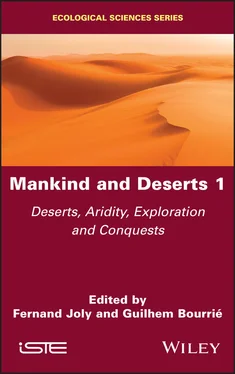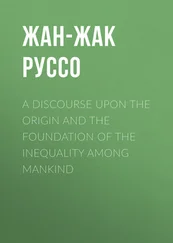Mankind and Deserts 1
Здесь есть возможность читать онлайн «Mankind and Deserts 1» — ознакомительный отрывок электронной книги совершенно бесплатно, а после прочтения отрывка купить полную версию. В некоторых случаях можно слушать аудио, скачать через торрент в формате fb2 и присутствует краткое содержание. Жанр: unrecognised, на английском языке. Описание произведения, (предисловие) а так же отзывы посетителей доступны на портале библиотеки ЛибКат.
- Название:Mankind and Deserts 1
- Автор:
- Жанр:
- Год:неизвестен
- ISBN:нет данных
- Рейтинг книги:4 / 5. Голосов: 1
-
Избранное:Добавить в избранное
- Отзывы:
-
Ваша оценка:
- 80
- 1
- 2
- 3
- 4
- 5
Mankind and Deserts 1: краткое содержание, описание и аннотация
Предлагаем к чтению аннотацию, описание, краткое содержание или предисловие (зависит от того, что написал сам автор книги «Mankind and Deserts 1»). Если вы не нашли необходимую информацию о книге — напишите в комментариях, мы постараемся отыскать её.
Mankind and Deserts 1 — читать онлайн ознакомительный отрывок
Ниже представлен текст книги, разбитый по страницам. Система сохранения места последней прочитанной страницы, позволяет с удобством читать онлайн бесплатно книгу «Mankind and Deserts 1», без необходимости каждый раз заново искать на чём Вы остановились. Поставьте закладку, и сможете в любой момент перейти на страницу, на которой закончили чтение.
Интервал:
Закладка:
The desert is also a land of legend, exoticism and dreams, brimming over with fantasies and received ideas. Of course, this aspect of it is slowly diminishing as scientific discoveries and analyses progress and with the increasingly widespread sharing of images from these regions. The Romantics turned the desert into a mysterious land, overwhelmed by light and heat, throwing up strange mirages and sandstorms that could bury entire caravans. It was a hellish land of thirst and wind, of silence and death, that was both fascinating and horrifying. In the colonial period, the desert was always considered a redoubtable and inhuman place, the stuff of myth and legend. It was perilous, meant for military glory (like the French Foreign Legion, whose history waxes eloquent on the legionnaire “feeling the hot sand against his skin”) or for punishment (the African battalions). Even today, several fictional deserts survive, often harsher than the real ones. Dating back to a time when those who traversed the deserts were travelers, merchants or armies (rather than explorers and tourists), these accounts are often embellished with personal impressions and adventures; many are full of exaggerations or even implausible details and many were romanticized or often deliberately falsified in order to win glory, for political reasons, or to distract the competition. And so, for the layman, the desert was a secret region, hostile and populated by unknown beings who were strange and redoubtable. Many writers, carried away by their own lyrical writing or innovations, helped spread a deformed and enduring vision of the desert. For example, there was the French writer Eugène Fromentin’s A Summer in the Sahara (which was actually about the Algerian plains) or Pierre Benoît’s The Atlantide . These dreamlike deserts, “postiches” as they were dubbed by Monod, are a stark contrast to the more realistic and sobering deserts that feature in Westerns and “atmospheric novels” of the modern age, such as the novels about the American West by T. Hillerman and E. Abbey, or A. Upfield’s Australian novels.
1.2.2. Conceptual deserts: deserts that have been experienced
Each desert, considered as an object of study, may be dissected, qualified and quantified. However, this does not result in a homogeneous and unique scientific concept of deserts. A desert cannot be reduced to a concrete, simple and universal formula. To each their own desert, which seems to them more “desert-like and true” than another’s concept. There are, therefore, physical deserts that are objective and measurable by a certain degree of aridity, and then there are psychic deserts, subjective and experienced as a sensation of emptiness and the absence (or, at least, the apparent absence) of human life, and the “true desert” is, in fact, a combination of these two. For Monod, the “true” desert is the “experienced” desert, which one has walked oneself, lived through, feared and admired.
1.3. The world of deserts
In these conditions, it is futile to try and establish a clear definition of a desert that would be applicable in all cases. However, transecting a desert (the Sahara, for instance) from its periphery to its center (or the other way around) could help in revealing the most specific characteristics of the desert state , as is found, to varying degrees, in all deserts around the world.
The characteristic that can be spotted by even the untrained eye is the rapid degradation of any green cover . If someone were flying over it, in just a few minutes the view of greenery from the plane would shift from a clear forest or savanna to a disjointed steppe until it disappears altogether. On land, however, we can see that this degradation involves a gradual decrease in both the number of individual plants as well as the number of species (biodiversity), leading to increasing homogeneity. This is compounded by the unequal distribution of vegetation, spread out on the slopes and interfluves, concentrated in the wadis and showing significant variations in vitality depending on the rainfall, with certain plants rapidly blossoming after a downpour. This decrease in vegetation is accompanied by an equal decrease in the fauna in the region, especially of the animals that are most dependent on vegetation and water.
The hydrographic disruption manifests as the rarefaction of drains and a growing anarchy in water flows. Concentrated drainage divides into independent networks that become fewer and fewer in number and less and less hierarchic, with the water finally forming isolated channels or even disappearing completely. Most channels are dry in all seasons and are only revived during a flood. Apart from the large, exorheic 4 allogenous rivers, such as the Nile or the Euphrates, water flow is exclusively local and linked to precipitation, which is itself intermittent and irregular. Between channels, during the rains the surface of an interfluve may often be swept by diffuse flows, in sheets or numerous and changing gullies. All these drains, except for those along the maritime coasts, are endorheic 5 , that is, they lead to closed basins of all sizes, which are numerous and independent, where they are lost. There is also the extreme case of an arheic region 6 where there is a complete absence of water flow.
The morphology of a desert is also formed of unique features of relief, owing to the specific conditions of the desert model. The disaggregation of hydrographic networks reduces the preeminence of valleys in a landscape. The desert is flat until it enters the mountains. The horizontal shapes or shapes with very small slopes, plains, plateaus and glacis 7 overpower sharp reliefs or reduce them to eroded tussocks or to small isolated massifs ( inselbergs 8 ). And everywhere you have evidence of the wind at work. The sweeping winds shave off the finest elements from the rocky floors and alluvial sheets and accumulate them into dunes, scattered or grouped together ( ergs ).
The scarcity of water and arable land leads to a dispersion of land use and sedentary life , with sedentary populations tending to settle around better land, or land that is less poor. Humans seek alluvial land, which is more or less regularly flooded or is, at least, irrigable using ancient and varied systems. This leads to populations, cultures and habitats ( oasis ) being scattered (around water bodies) or arranged in a linear manner (along a river), further accentuating the powerful impression of a void that a desert creates. A relative void, however, because although the isolated and precarious water bodies, springs or wells cannot sustain agriculture by themselves, they can sustain an active, if highly scattered, nomadic life.
To summarize, we can identify five factors that make up the concept of a desert and that characterize deserts, to varying degrees and based on various combinations of different geographic features:
1) the most general of these is aridity (see Chapter 3, p. 65), an obvious aspect that is, however, difficult to define and measure, as it involves the scarcity of precipitation, intense evaporation as well as the nature of soil (substratum and superficial formations);
2) problems with water (see Volume 2, Chapters 1– 3) are largely dependent on the previous point. While these problems involve the modalities of flow and how these affect the landscape morphology, they also involve water inputs and water capacity in the region, as well as the various ways in which inhabitants of the region use these resources;
3) the presence of salts (see Volume 2, Chapter 4), whose nature and abundance depends on the highly varied combinations of aridity and the input of dissolved salts in water, a condition that makes the water non-potable but also serves as an essential resource. This mineral wealth can be transported by the caravans for trade;
Читать дальшеИнтервал:
Закладка:
Похожие книги на «Mankind and Deserts 1»
Представляем Вашему вниманию похожие книги на «Mankind and Deserts 1» списком для выбора. Мы отобрали схожую по названию и смыслу литературу в надежде предоставить читателям больше вариантов отыскать новые, интересные, ещё непрочитанные произведения.
Обсуждение, отзывы о книге «Mankind and Deserts 1» и просто собственные мнения читателей. Оставьте ваши комментарии, напишите, что Вы думаете о произведении, его смысле или главных героях. Укажите что конкретно понравилось, а что нет, и почему Вы так считаете.











